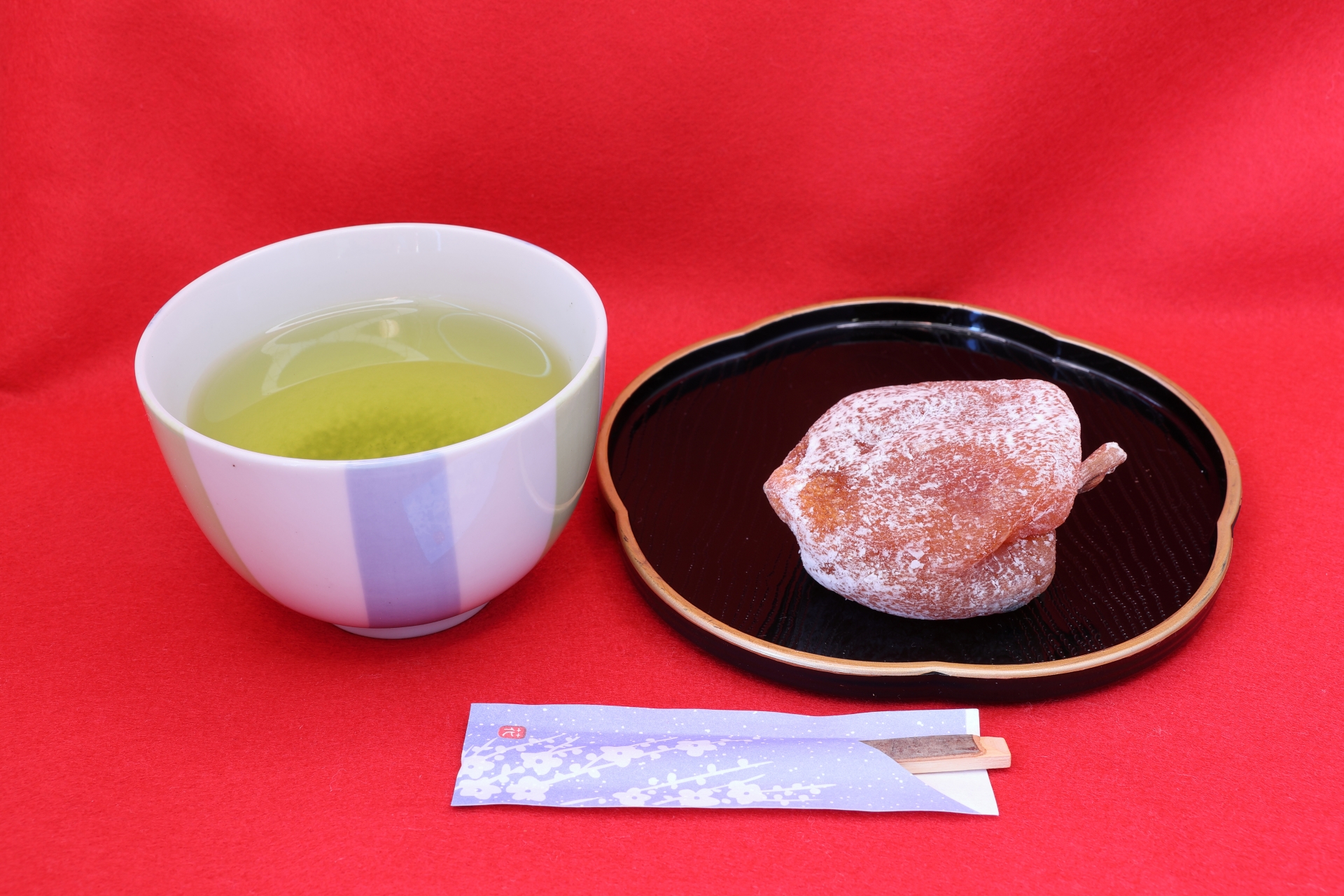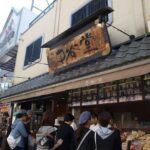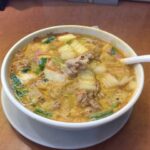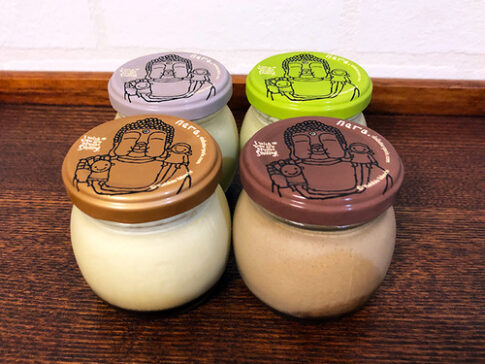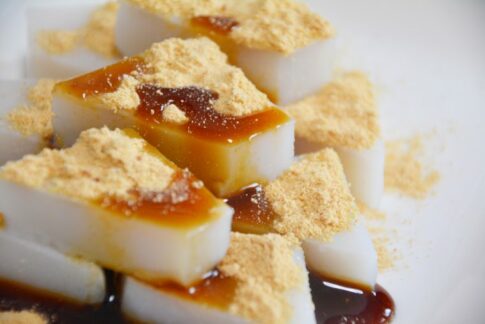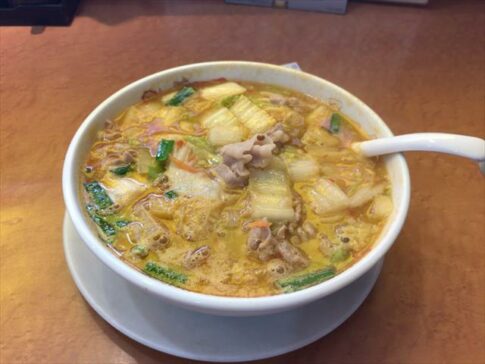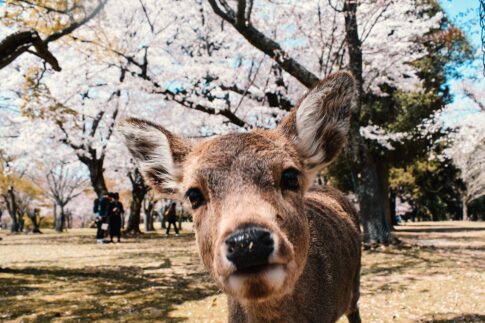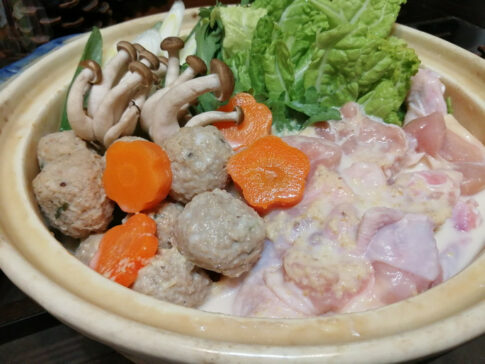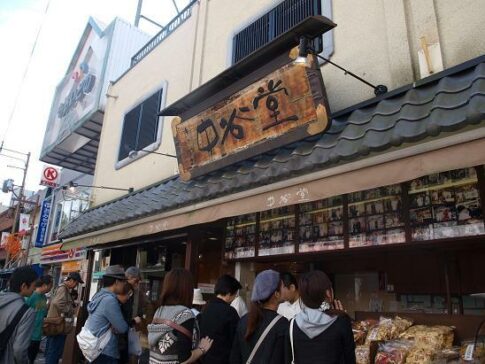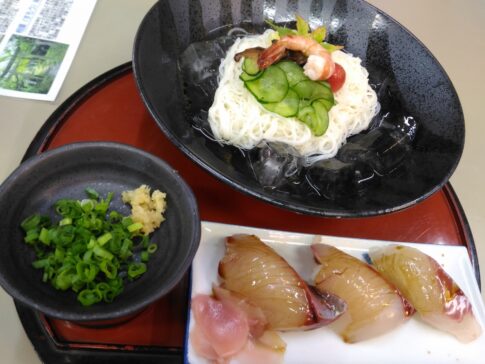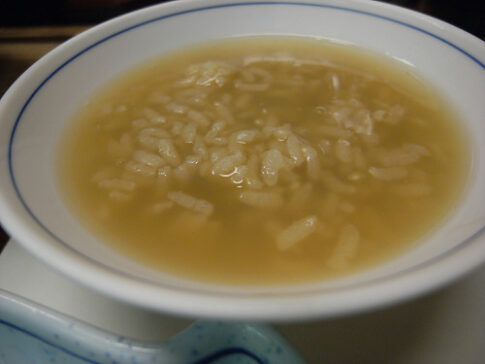Persimmons are Nara Prefecture’s representative agricultural product and the second largest producer in Japan.
You can enjoy a wide variety of persimmon sweets too!
What you need to know About Persimmon Sweets
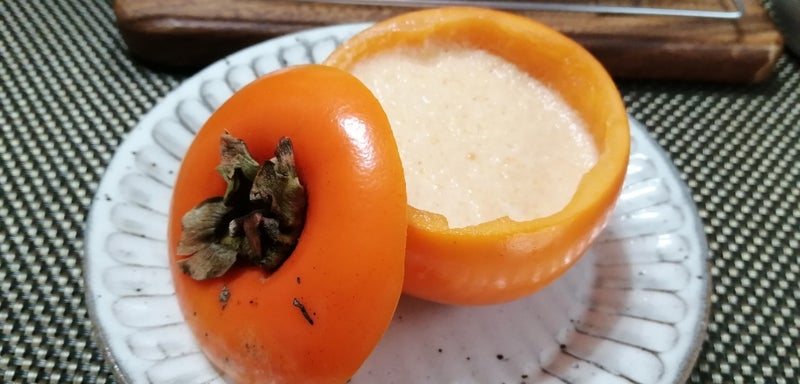
1. Basic Information
Persimmons are shipped for as long as six months each year, beginning with house persimmons (natsu-kaki) in summer, followed by open-air persimmons in fall and refrigerated persimmons in winter.
The history of persimmons in Nara is long, and is even recorded in the “Shosoin Documents.
2. Nara Brand
Nara’s persimmon is a national brand!
Many fruits are shipped from Nara Prefecture to all over Japan. Among them, Nara’s persimmons are among the best in the country in terms of both quantity and quality.
In the fall, many of these fruits line store shelves, and their sweet aroma wafts through the air.
The persimmon season continues until December with the first shipment of “Tone Sasai,” followed by “Hiratane” and “Fuyu” persimmons.
In Nishiyoshino Town, Gojo City, 200 tons of persimmons are shipped per day during the peak season.
Persimmons harvested in Gojo City, Tenri City, Gosho City, Shimoichi Town, and other persimmon-producing areas in the prefecture are transported to a fruit-sorting plant for selection and shipment to all parts of Japan.
In particular, many persimmons are shipped to urban areas such as Keihin, Tohoku, and Keihanshin, and Nara’s persimmons have become a national brand.
The climate and climate with temperature differences are probably suitable for growing persimmons. Large, sweet-tasting, large-bodied persimmons are popular.
3. House Persimmons in Nara
Nara Prefecture has the largest shipment of house persimmons in Japan.
Every year, near the end of the rainy season, the first selection of persimmons is made at the JA Naraken Nishiyoshino Persimmon Selection Plant, and then they are shipped by air to all over Japan.
Nara Prefecture’s house persimmon is a variety called “Tonewase,” which is characterized by its seedless, mild flavor and high sugar content.
They are grown in greenhouses where boilers are kept on during the cold winter months to maintain a constant temperature.
Temperature and water management is difficult and affects the coloring and taste.
House persimmons grown in this way are sent to a sorting plant, where they are sorted into different grades and packed in boxes.
In this way, the house persimmons, which are as good as those harvested in the fall, are shipped nationwide, mainly as gifts.
4. Main production areas
Gojo City, Tenri City, Gosho City, Shimoichi Town
Nara is a good place for making persimmons!
Persimmons in Nara are grown in mid-mountainous areas at elevations of 100 to 400 meters above sea level.
With an average annual temperature of 14-15℃, the climate is very suitable for growing persimmons due to the temperature difference during the harvest season and the well-drained slopes.
5. Variety of Nara’s Persimmon
Three varieties are produced in Gojo City, Nara Prefecture, each with a different shipping time and flavor.
Tonewase, Hiratanenashi, and Fuyu
Tonewase, the earliest to be shipped, is a variety found in Nara Prefecture, and has a similar appearance and taste to the Hira-no-Kakunashi variety introduced next.
However, the ripening period is about two weeks earlier than Hirakunaku-mu, and including greenhouse cultivation, it is available from mid-July to mid-September.
The “Hiratanenashinashi” persimmon, as its name suggests, has no seeds, making it very easy to eat, and it is characterized by its moderate firmness and abundant juice.
It is shipped from mid-September to mid-October, and is recommended for those who wish to purchase a relatively large quantity, as it has a long shelf life among astringent persimmon varieties as a whole.
The last one, “Fuyu,” is a type of perfectly sweet persimmon, and is the most widely produced of all persimmon varieties.
It is characterized by its dense, soft flesh and high juice content.
The main shipping season is from early November to late December, but due to its long shelf life, some are stored in refrigeration for one to three months at ice temperatures, etc., and shipped from December to February.
6. Nutrition of Persimmon
Twice as much vitamin C as oranges! Nutrient-rich persimmon
Persimmons contain about twice as much vitamin C as oranges and about five times as much tannin (polyphenol) as grapes, and are also rich in vitamin A (beta carotene) and potassium.
For this reason, it is said that “when a persimmon turns red, the doctor turns blue,” and since just one persimmon can supply the recommended daily amount of vitamin C, it is a fruit that health-conscious people should definitely eat.
7. Persimmon Sweets
- Dried Persimmons
About 10 kinds of persimmon sweets, including seasonal products, are lined up in the store.
Kaki Hiyori” (40g, 350 yen without tax), made from thickly sliced and slowly dried Tomiyu persimmons, is a dried persimmon with a new texture.
The more you bite into it, the more the flavor spreads in your mouth. It can be eaten as is, topped with cream cheese as a wine snack, or dipped in yogurt. You will discover a new taste of persimmon.
- Kaki Monaka(wafer cake filled with persimmon paste)
The “Kaki Monaka” (130 yen/piece, tax excluded) is made without azuki beans, but only with persimmon paste, which is boiled down to remove the water content.
It has a refined taste with a hint of yuzu (Japanese citron) and a moderate sweetness.
- Persimmon Butter
Persimmon Butter (600 yen/excluding tax) is a product that won the grand prize in the product category of the “Such and Such Award 2016,” a competition for specialty products from across Japan on 47CLUB, an Internet shopping site created by local newspapers nationwide.
This product is made by carefully boiling down persimmon pulp and combining it with butter. It is characterized by its gentle sweetness and buttery aroma.
When eaten as is, it tastes like a rich caramel. When spread on bread, it has a buttery aroma.
It can also be served on crackers as a snack. It is also a popular souvenir throughout the year.
Persimmon Jam” (500 yen, not including tax) is made by dicing persimmons and combining them with puree.
It can be eaten as is, spread on bread, or added to yogurt.
8. Where to get
These can be purchased at a store called “Kaki no Senmonen.
The Kaki no Senmonen store is located along Sanjo Dori, Nara’s main street, heading east from JR Nara Station.
It is located on the first floor of a building on the north corner of the Yasuragi no Michi intersection, facing east from the Nara City Tourism Center, and is a little off the street, so it is hard to find at first, but it is a comfortable space where you can rest and relax.
The walls and floor are white. The white walls and flooring make the persimmon-colored sweets stand out.
The shop is designed in the hope that people will take a closer look at Nara’s specialty, the persimmon.
The stylish atmosphere also expresses the wish to renew the conventional image of persimmons and to incorporate more persimmons into daily life.
Summary
Nara is also famous for persimmons other than ancient city.
You can enjoy persimmon sweets with traditional scenery!
